HUNTINGsmart! USA Knowledge Base
Module 10 - WILDLIFE
WHITE-TAILED DEER
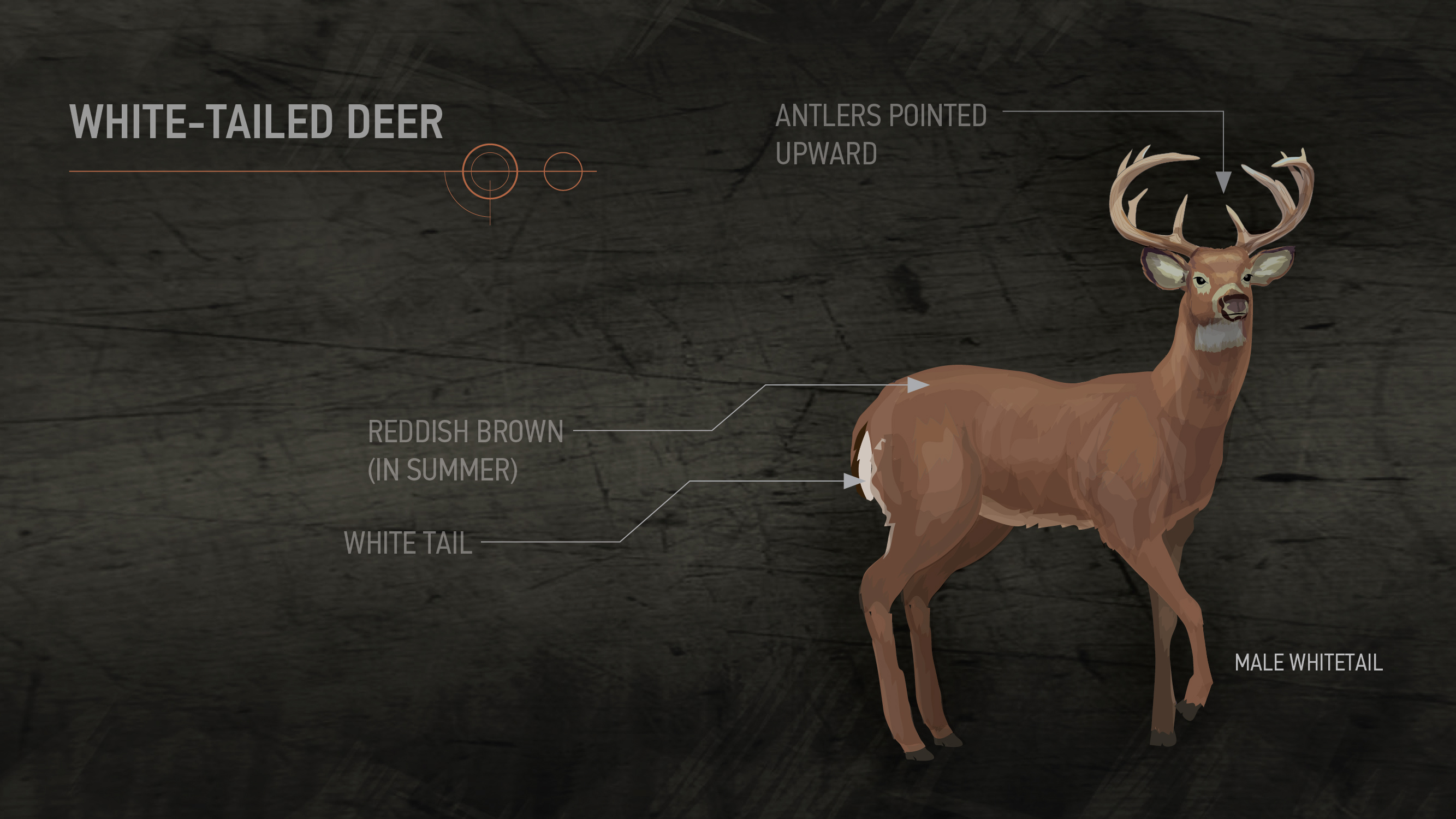
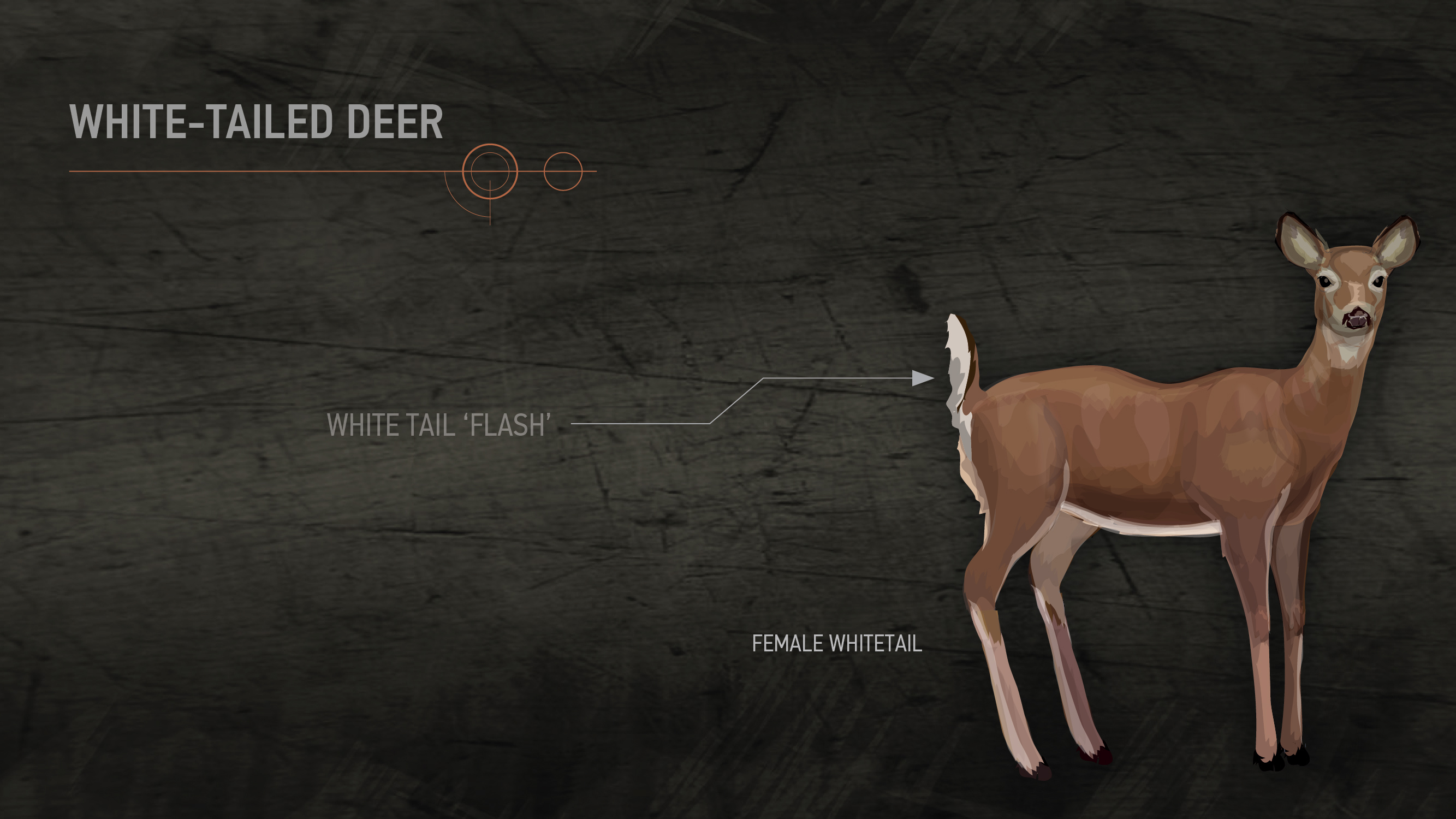
They’re a classic. Learn up if you want one of these antlered beauties mounted on your wall.
Identification
The main identifying feature of the white-tailed deer is their tail. The underside is white and it will raise up or ‘flash’ if the deer has been disturbed or when it’s running. Their coats change color with the seasons, from a reddish-brown in the summer months to a greyish-brown in the winter months.
Males (bucks) usually hang out solo, weigh between 100-300 lbs. and have antlers that grow up and forward, with pointed tips that project upward. Lady deer (does) prefer the group dynamic and weigh between 85-135 lbs. Additionally, white-tails have cloven hooves that leave a heart-shaped track behind.
White-tails also have a highly developed sense of sight, smell and hearing. Getting close enough to spot them before they spot you is definitely the toughest part about hunting them.
Fawn vs. ‘Button Buck’ vs. Doe: How to Differentiate
As deer populations increase, the need to harvest more does will increase as well. However it's not always easy to tell the difference between ‘button bucks’, fawns and similarly-sized does. Look for the following distinguishing features:
Physical Traits:
- Adult does are larger than fawns.
- Does are longer than they are tall (their bodies will have a rectangular shape).
- The head of an adult doe has a longer bottle shape, whereas a fawn head will look stubbier.
- Both male and female fawns are as long as they are tall, which gives them a square-ish shape.
- All female deer (fawn or adult does) have a rounded head. The head of a ‘button buck’ will look nearly flat on top in comparison.
- Although male fawns lack antlers, when they’re viewed from above, you can often see the protruding ‘buttons’ that will eventually turn into a full antler rack.
Behavioural Traits:
- Fawn bucks are less cautious than female deer of any age. For example, if you're keeping watch of a food plot and a single antler-less deer arrives and begins to eat without hesitating, it’s probably a fawn buck).
- Does will be much more wary of their surroundings and will often appear to be nervous.
Three Point Checklist:
Follow this three-point checklist to confirm that your target is a doe, before you take the shot:
- Is the body rectangular in shape?
- Is the head round on top?
- Is the deer cautious and alert?
If the answer to all three questions is ‘yes’, then you know the deer is a doe and not a fawn or a ‘button buck’.
DIET
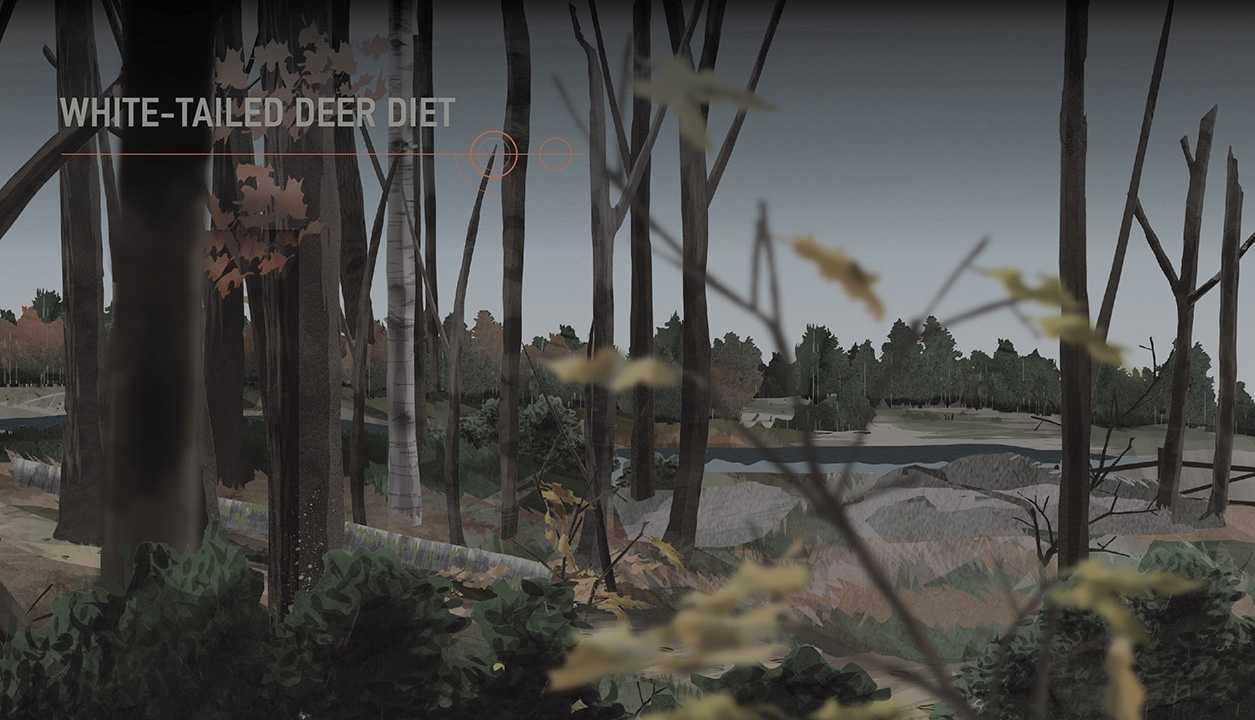
Deer are herbivores and will nibble on just about any kind of available vegetation. During the spring, summer and fall seasons they’ll go for grasses, moss, flowers, and leaves from tree branches and shrubs. In the winter months they’ll eat acorns, the buds and twigs of birch, maple and aspen trees, the buds on cedar boughs and any farming crops they feel bold enough to get close to. Keep this in mind when planning out your hunting trip.
HABITAT
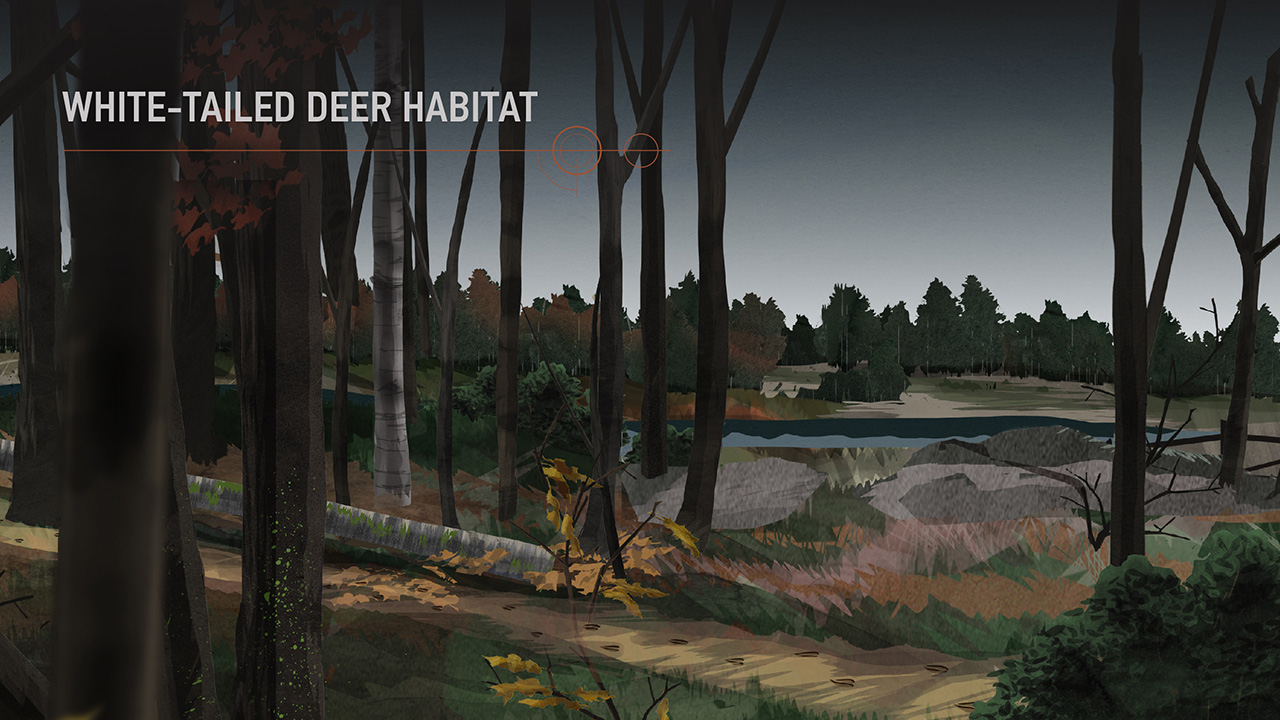
White-tailed deer are highly adaptable, and can easily adjust to living in multiple habitat types, including forests, grasslands, plains, mountains and prairies. In general though, they prefer habitats that will shelter them from the elements and from any potential predators. Often they will graze in more open areas, returning to the shelter of the woods at night and during the winter months. Deer also seek out regions with ample sunlight as those areas will allow for thick plant growth, which will serve as both food and shelter. Keep an eye on the edges of fields, swamps and forests as these areas will often provide a food and water source for deer.
SCAT
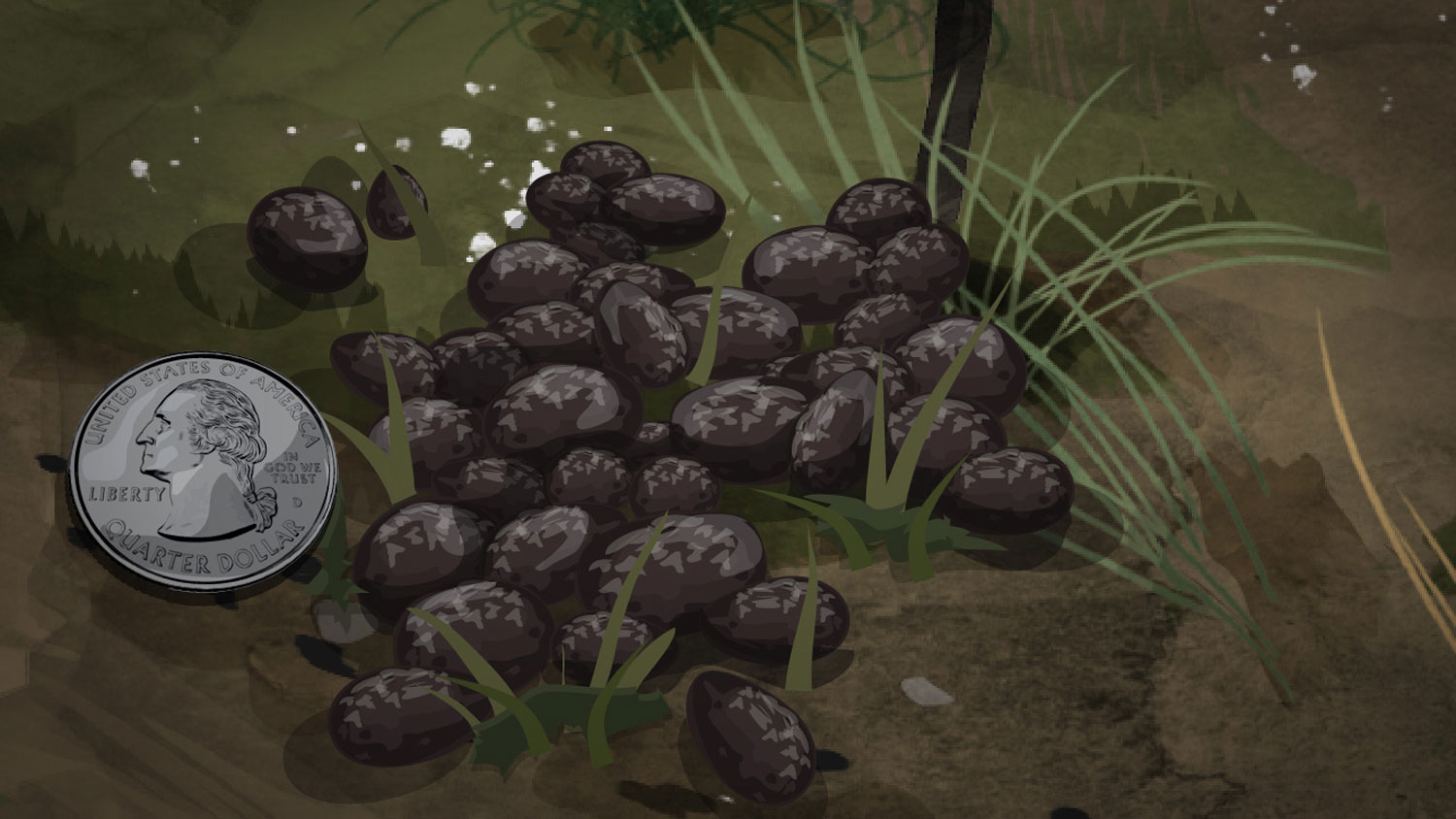
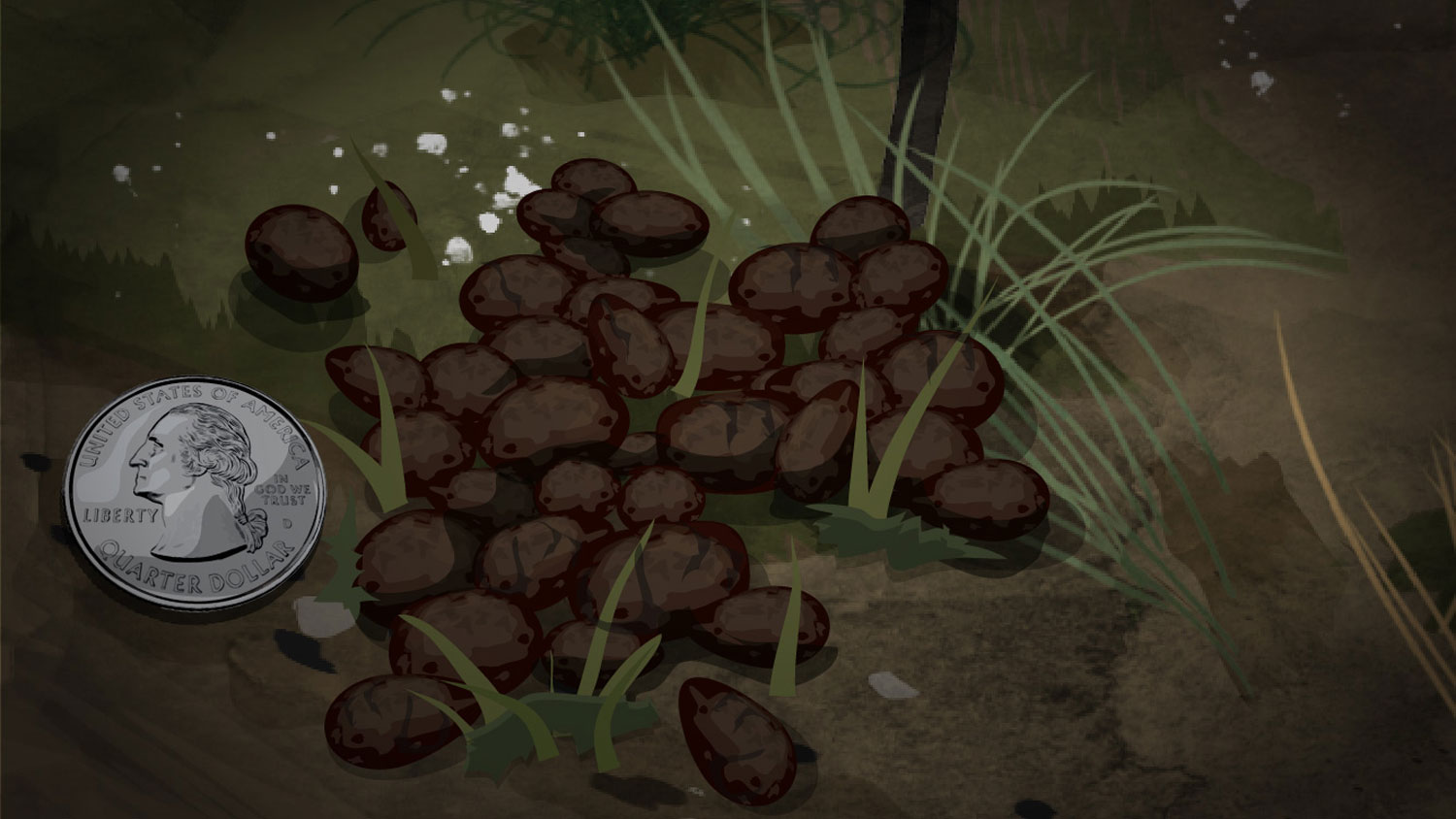
Deer poop (pellet piles) can tell you where your buck is. You’ve just got to know what you’re looking for. It’s pretty straight forward—if you’ve found smaller pellets, you’re following a smaller deer. What you want to find are large piles of ¾-inch (ish) pellets—the kind that big bucks drop. When you find big pellets, take a good look to figure out how fresh the pile is. Dry-looking scat will probably be a few days old. However, if the pellets have a wet, shiny look to them, they were probably dropped between 6-12 hours ago or less… but don’t be fooled. Weather conditions (like humidity or rain) can make old scat look shiny and fresh.
SCRAPES AND RUBS
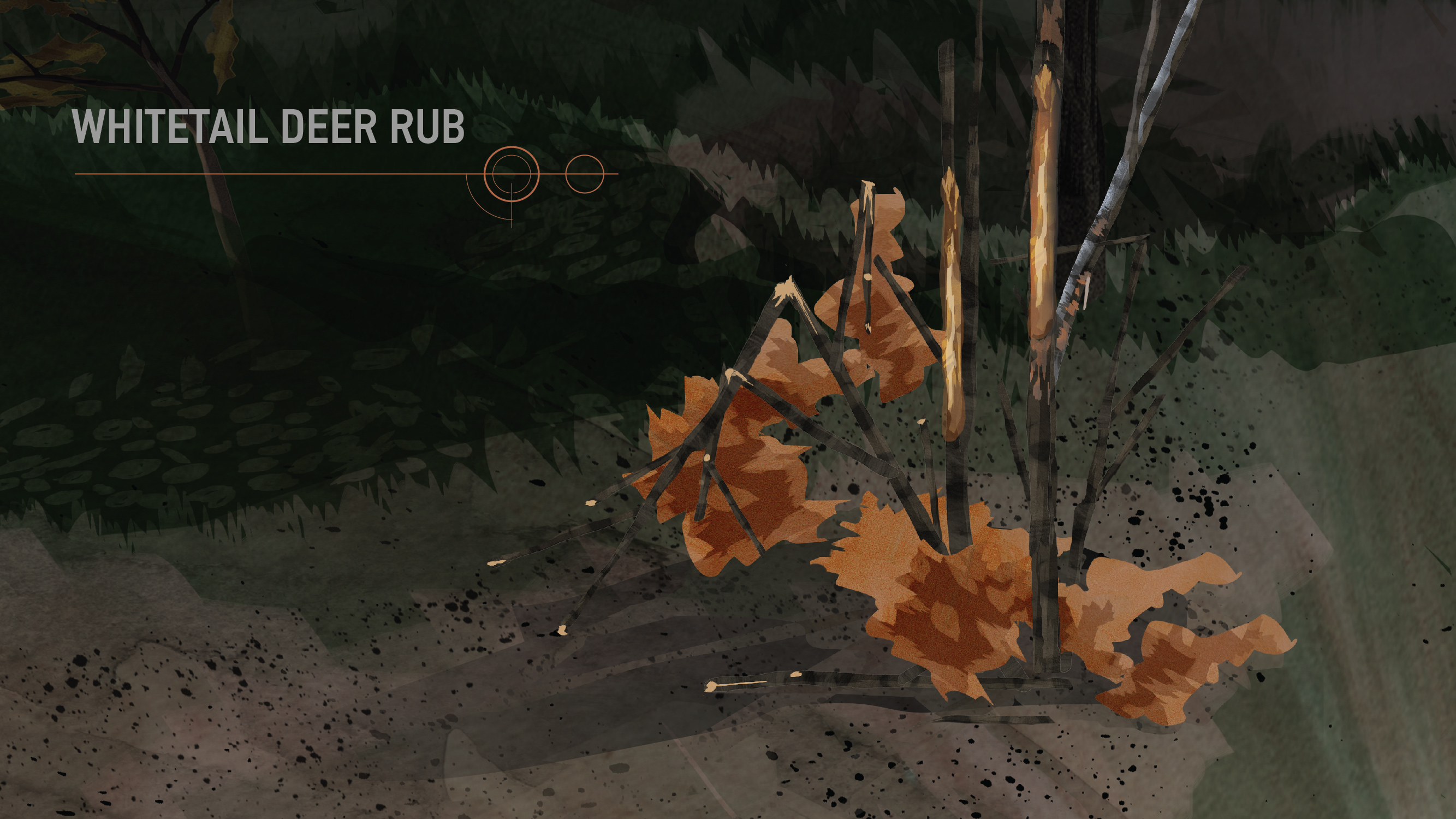

If you’re looking for a buck, you should be looking for rubs and scrapes. A rub is the result of a buck rubbing his forehead and antlers against the base of a tree. You’ll notice deer rubs when the bucks are trying to get the velvet off their antlers to freshen up for the ladies during the rut season (the late summer to early fall period). Scrapes are small patches of earth that bucks scratch up and pee on to mark their territory. Bucks make scrapes all year long to say, “I’m here!”, however you’ll see much more scrape activity during the rut season.
CALLS
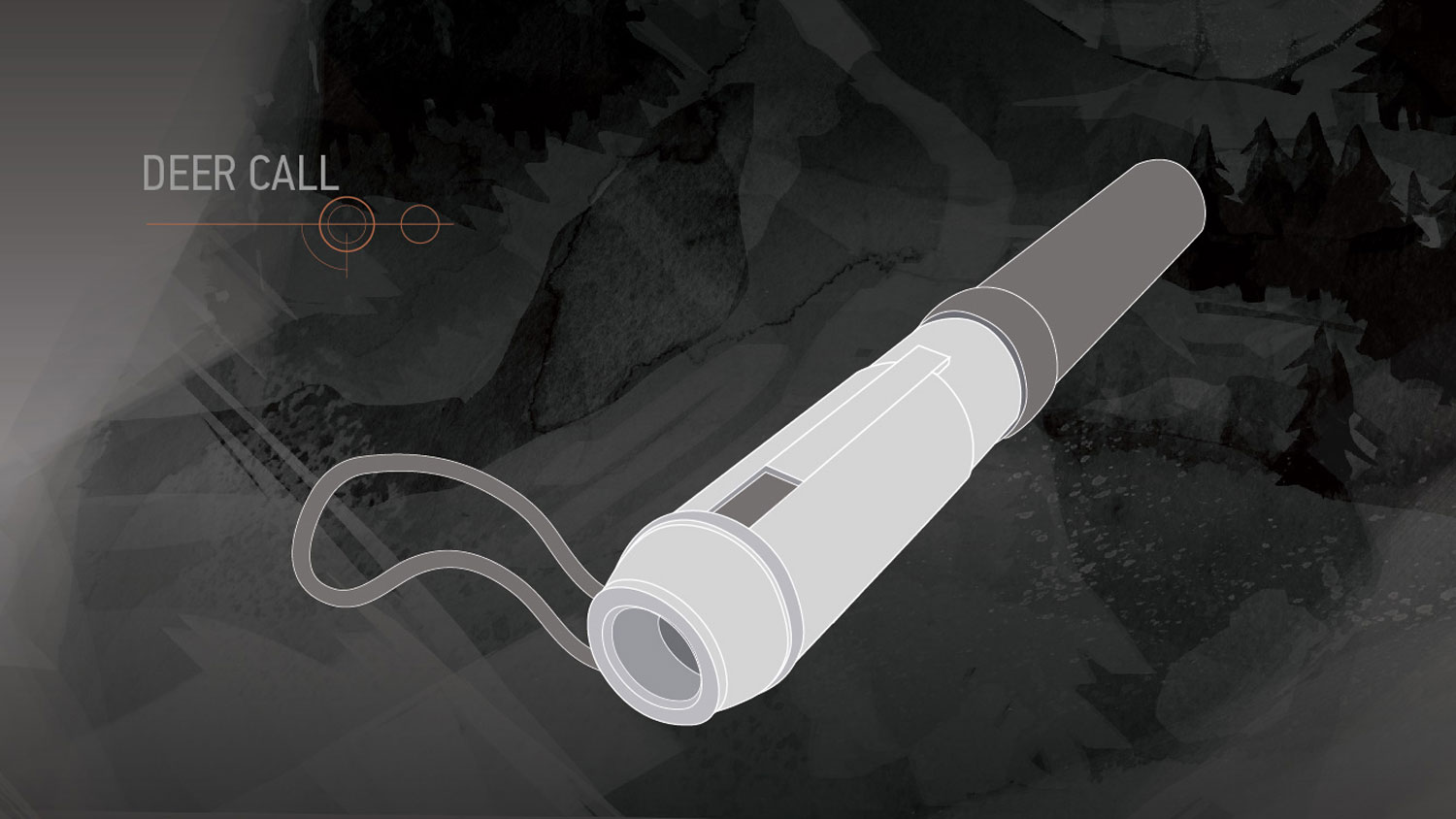
Do it right or don’t do it at all. Why? Because a white-tailed deer will know if your deer call sounds even a little bit off. Calling a deer incorrectly will have the opposite effect and will scare them off. Additionally, you must be careful not to over-call a deer. If you spot a deer in the distance, you don’t need to make loud calls. Instead, start softly with a grunt call or try gently rattling antlers together. Watch to see how he reacts before taking it up a notch in volume. If you call and he continues walking, he probably didn’t hear you. If you call and he stops what he’s doing and starts in your direction, keeping his head low and tail tucked down, he’s nervous about the sound you’ve produced and you should keep quiet until he relaxes again. If you call and he stops eating, looks toward you and then returns to eating, he knows you’re there but doesn’t care. If this happens, keep making call sounds until he gets curious enough to wander towards the source of the sound.
Once you find a call device that works for you, the following types of deer call sounds should bring the buck to you... as long as they’re done right:
- The ‘Contact Grunt’:
- Made with a grunt tube call, this will create the sound that a doe makes when she gets separated and is trying to contact the group, or when she’s trying to be social with the group. This call is more likely to attract does than bucks.
- The ‘Doe Bleat’:
- This is the sound a doe makes when she calls to her fawn or to the group. It’s a general sound, but it’s a sexy lady sound to a big buck.
- The ‘Tending Grunt’:
- This is the sound a buck makes when he’s asking a doe to stop so he can breed her. Bucks are competitive so if they hear another buck making this sound, they’ll come running to try to snatch the girl.
- The ‘Dominant Grunt’:
- This is the sound bucks make when they’re challenging each other. Use this call during the rut when the bucks are being territorial and restless. Basically, this grunt sound is how you say, “BRING IT” to the big boys. It’s an invitation to rumble.
- The “Snort-Wheeze”:
- This is the sound an aggressive buck makes during the rut because it invites worthy challengers into the ring, or in this case, the shooting range.
- Antler rattle:
- By rattling either fake or real antlers gently together, you can mimic the sound of roughhousing bucks at a distance. This is the sound of a challenge and it may bring a buck your way. Whitetails are cautious but very curious —they’ll want to wander in to check out the activity.
White-tailed Deer Hunting Tip: The Rut
The absolute best time to use a deer call or antler rattle to bring a buck to you is during the rut. Beginning in late September and peaking in October, this is the time of year that there’s a lot of movement, distraction, aggression and competition among the white-tailed deer populations. The big bucks will tune into the sounds of a pretty lady or a challenging buck. If you can re-create these sounds you’ll be in business.
FIREARMS, Ammo & Your Target
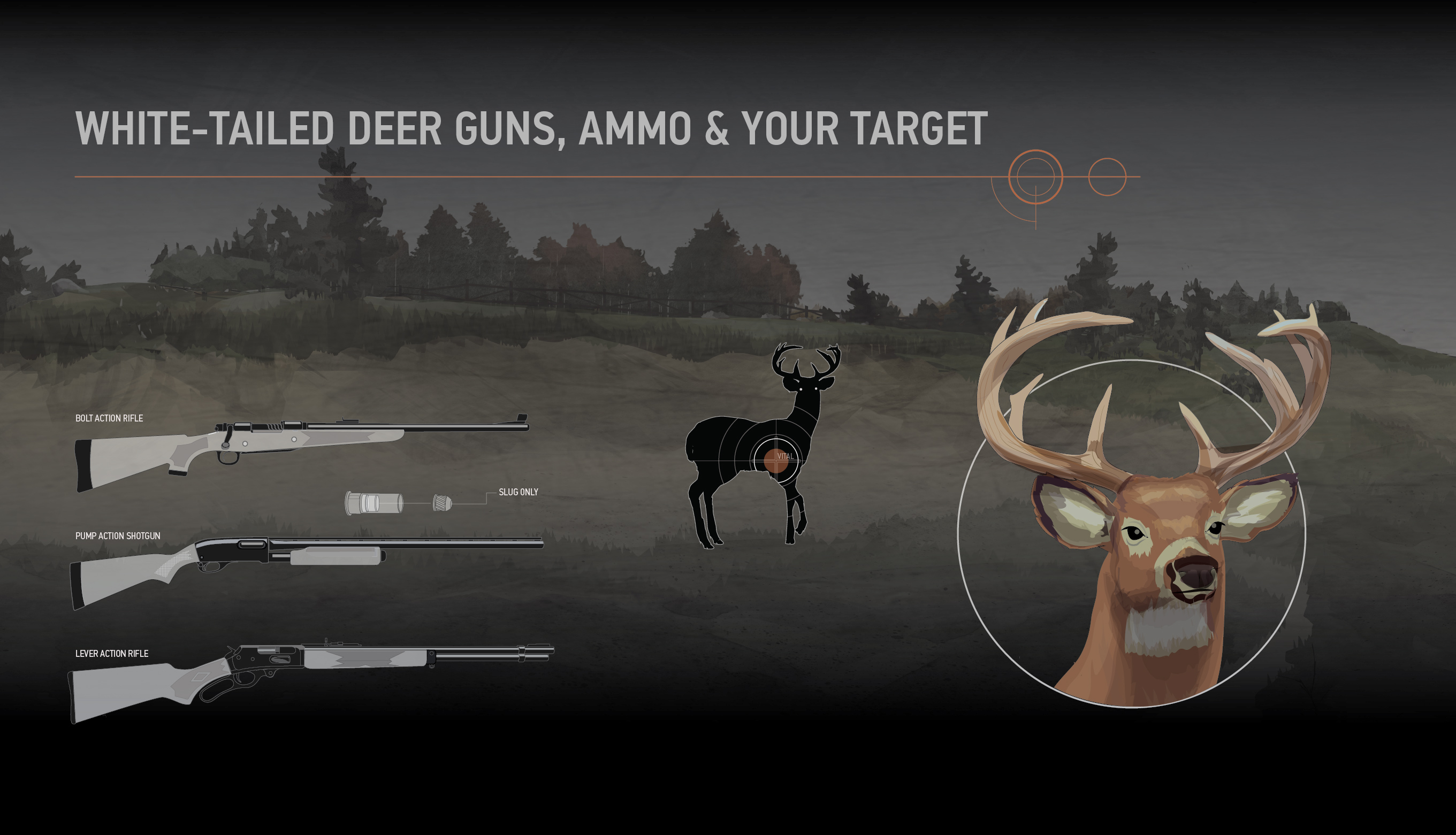
To kill a white-tailed deer quickly and efficiently, you need to make an accurate shot. Any modern rifle with a good quality scope will deliver the performance you need. For ammo, the trick is to find the right balance between expansion and penetration. You want the bullet to penetrate the game animal, to mushroom once inside and to cause hemorrhaging. There are a variety of deer hunting ammo options out there, but the minimum calibre for deer hunting is generally a 0.24. Talk to a pro to see what kind of ammo would be the best choice for your type of rifle.
Bowhunting? A compound bow or crossbow with sharp broadhead arrows will do the job.
VITAL ZONES
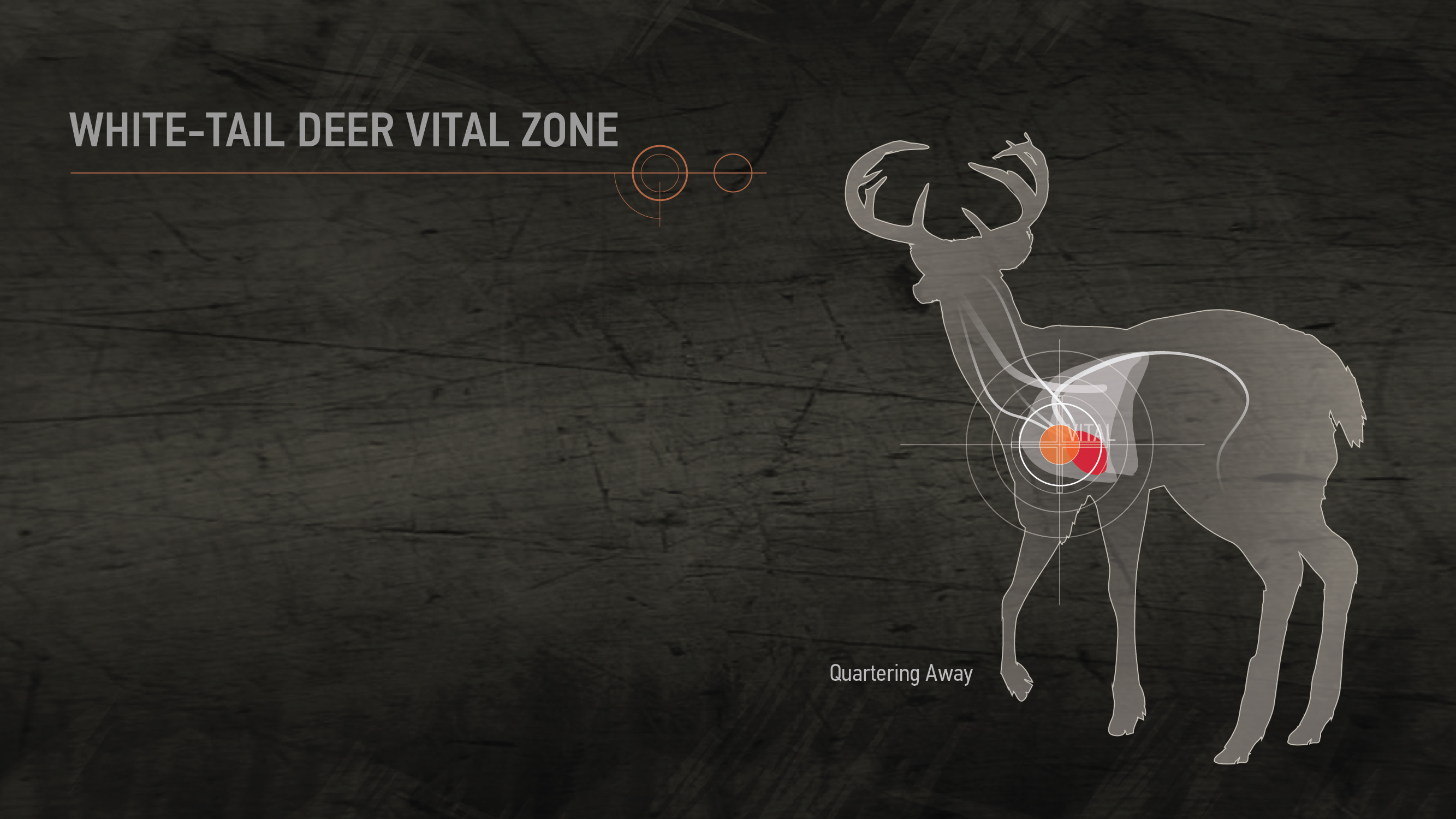
The vital zone area of a white-tailed deer is the heart and lungs—this is the area just behind the front shoulder.
Your Shot Options: Firearms
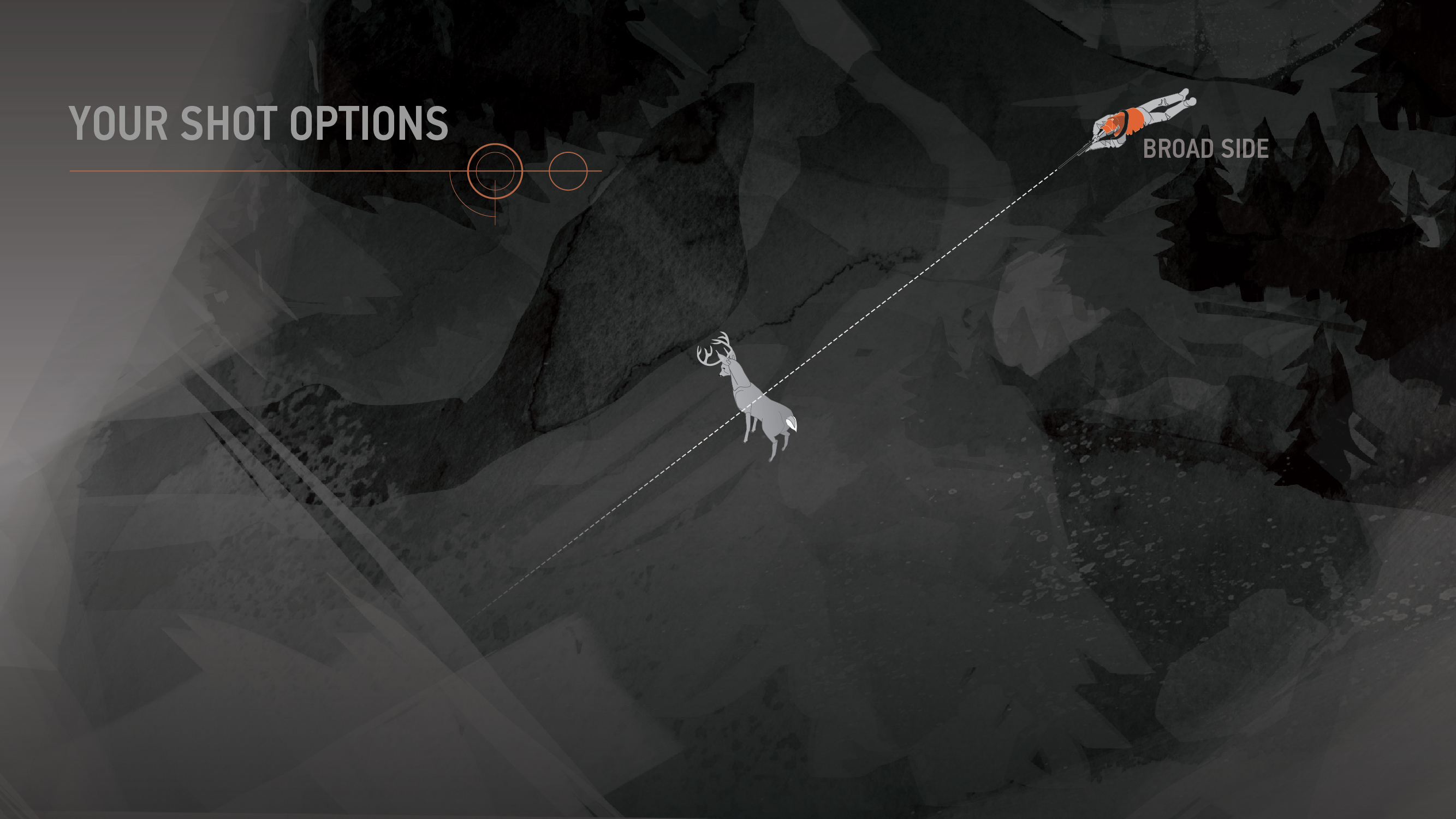
Broadside shots:
- The ‘broadside shot’ is when you’re shooting directly at the side of a deer.
- Broadside shots offer the best chance at hitting the shoulder and chest area.
- An accurate broadside shot will either drop the deer immediately or cause enough internal bleeding that there will be a blood trail that's easy to follow.
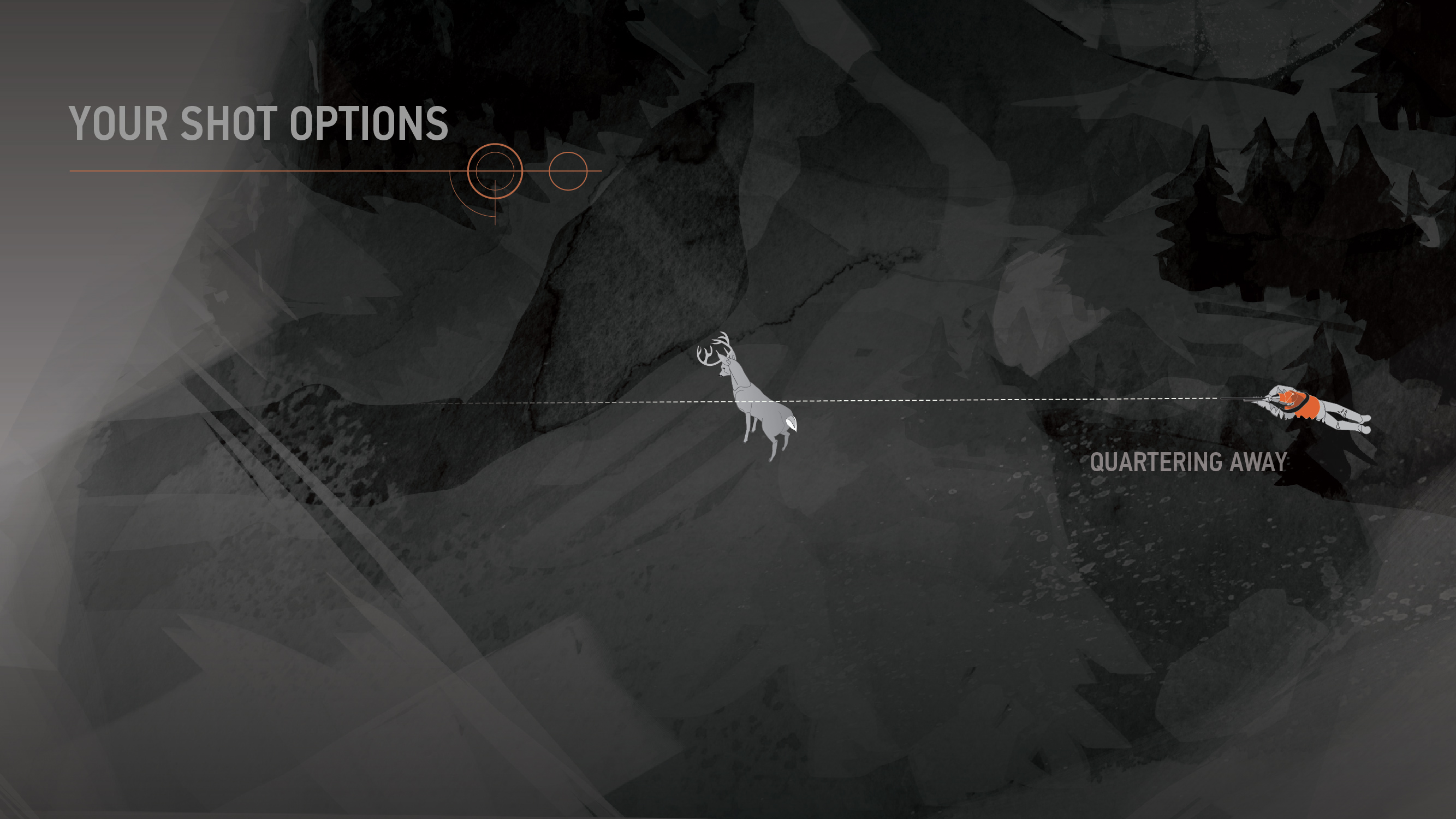
Quartering away:
- The ‘quartering away shot’ is your best shot opportunity for deer.
- This is when the deer is facing away from you and is stepping slightly forward. This exposes the vital zone area that is covered by the shoulder blade when the deer is standing still.
- An accurate ‘quartering away shot’ will hit the shoulder and chest area and either drop the deer immediately or cause enough internal bleeding that you’ll have a blood trail that's easy to follow.
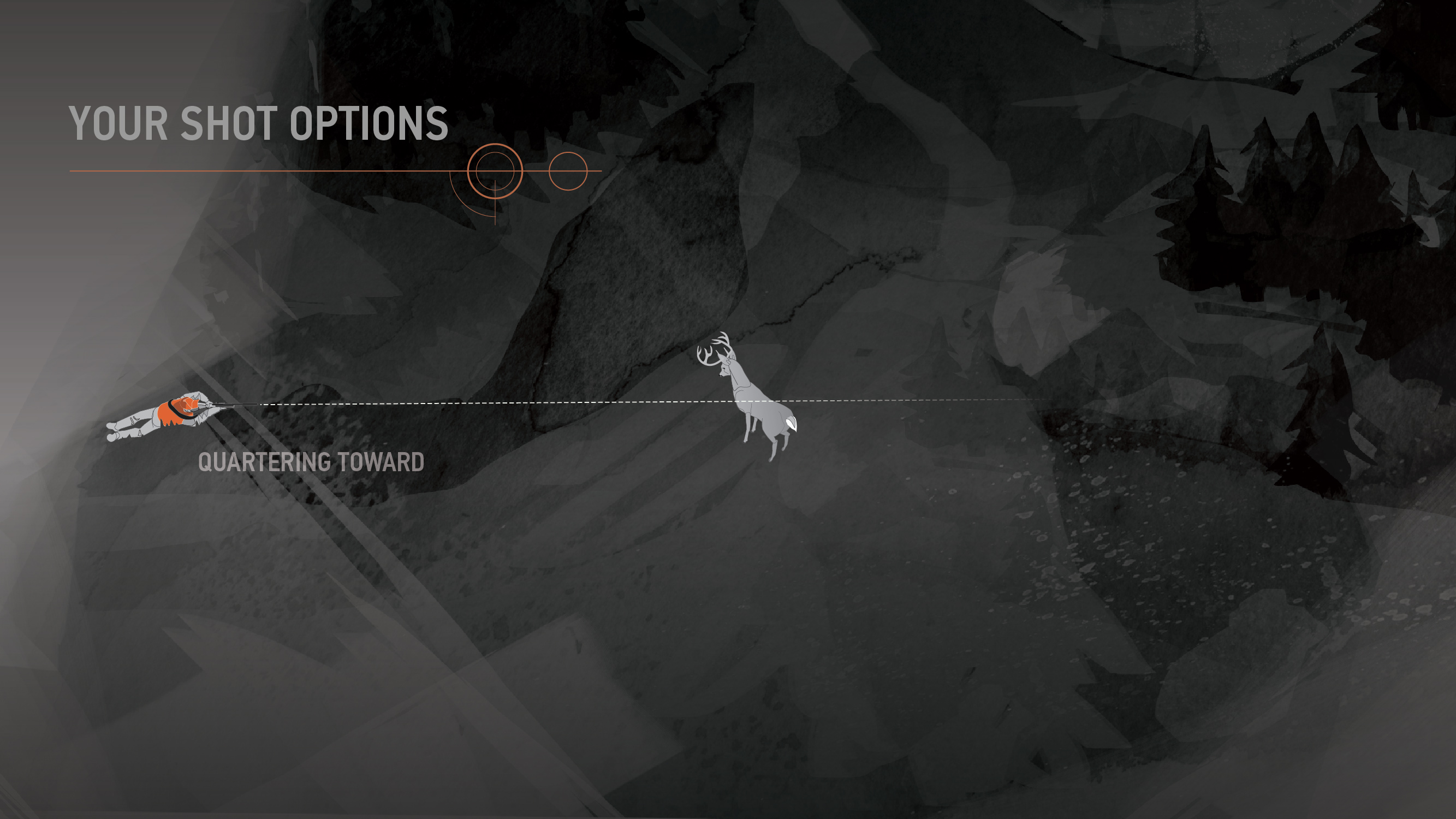
“Quartering toward:
- The ‘quartering toward shot’ means the deer is facing toward you.
- If the deer is ‘quartering toward’ you, aim for the front shoulder.
- If the shot is accurate, the bullet will pass through the lungs (and potentially the heart) and will exit the opposite shoulder blade.
The ‘treestand shot’ (sharp downward angle):
- A sharp downward angle provides a great shot opportunity for shooting deer.
- Aim directly at the spine in a location that allows the bullet to enter the vital zone area.
- The shock of the impact can drop the deer, and if necessary a quick follow-up shot can be taken.
Your Shot Options: Bowhunting
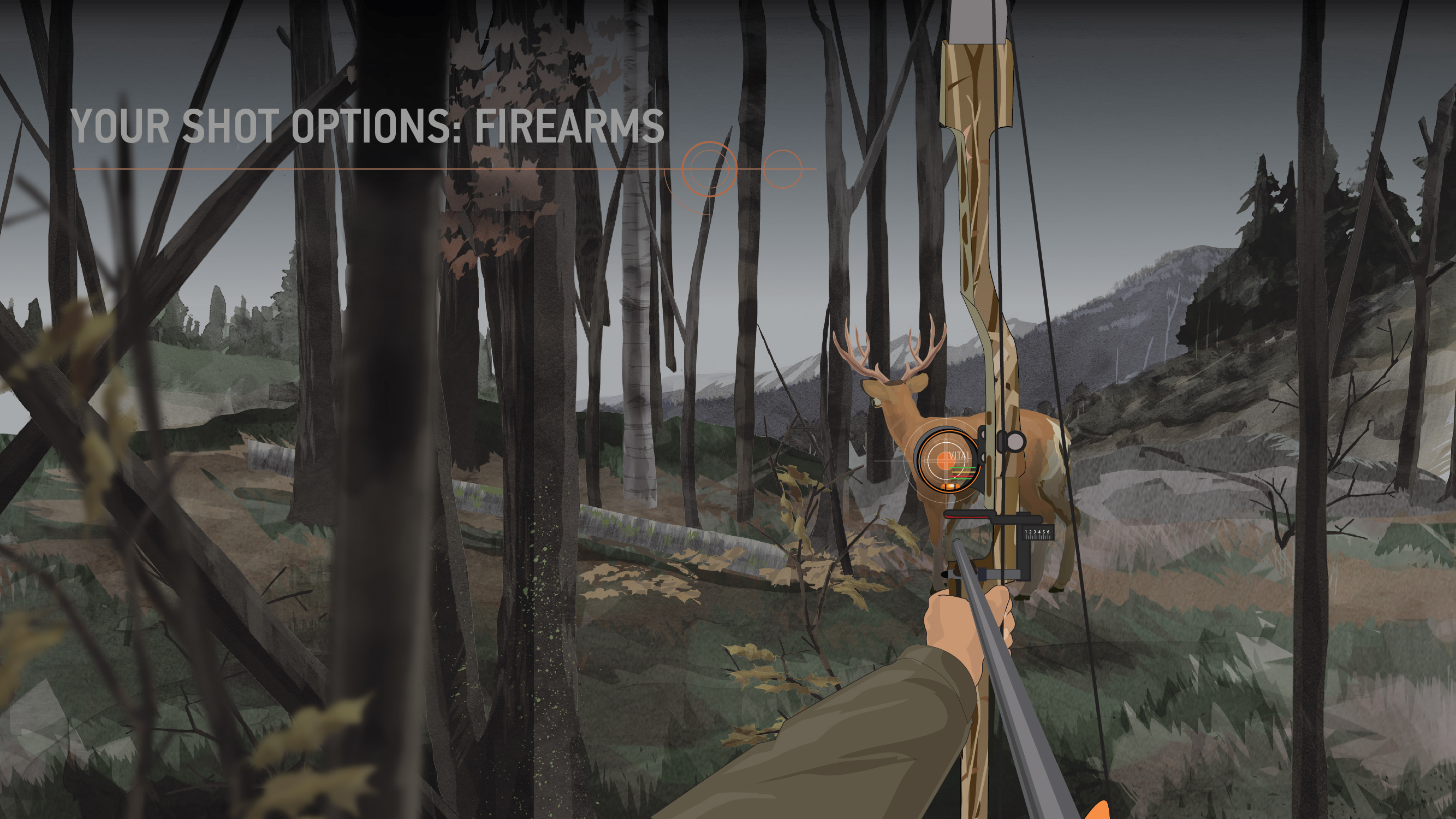

Broadside shots:
- Shooting a deer directly from the side is the ideal shot opportunity for a bowhunter—the side angle requires the least amount of penetration to reach the vital organs.
- Focus on that area just behind the front shoulder and aim for the heart, keeping in mind that a high shot will hit the lungs.
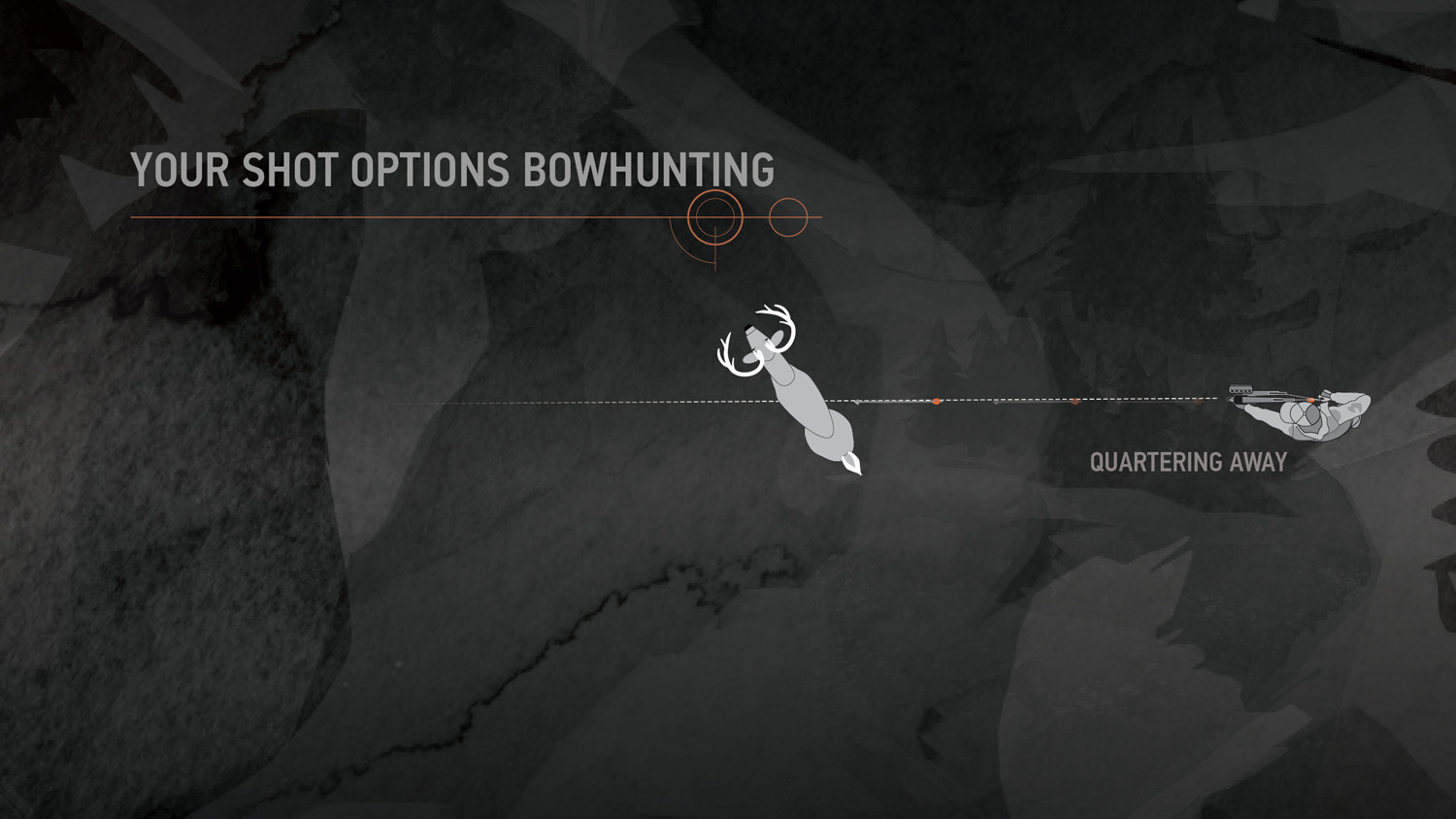
The Quartering away shot:
- The ‘quartering away’ shot is when the deer is facing away from you and is stepping slightly forward. This exposes the vital zone area that is covered by the shoulder blade when the deer is standing still.
- This shot is only ideal if taken at a 45° angle.
- If taken at more than a 45° angle, the gap between the rear hip and the front shoulder will become very small.
Shooting from a treestand: (sharp downward angle):
- A sharp downward angle provides a great shot opportunity for deer.
- Aim to one side of the spine in a location that allows the bullet to enter the vital zone area.
- The shock of the impact can drop the deer and if necessary, a quick follow-up shot can be taken.
General Shooting Tips:
- Never shoot at the head of a deer. This is an unethical shot and the cape will be damaged if you plan on mounting the head.
- Never shoot a sleeping deer—always practice fair chase.



